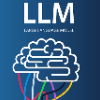Typosquatting is a long-standing cyber threat that exploits human error in typing URLs to deceive users, distribute malware, and conduct phishing attacks. With the proliferation of domain names and new Top-Level Domains (TLDs), typosquatting techniques have grown more sophisticated, posing significant risks to individuals, businesses, and national cybersecurity infrastructure. Traditional detection methods primarily focus on well-known impersonation patterns, leaving gaps in identifying more complex attacks. This study introduces a novel approach leveraging large language models (LLMs) to enhance typosquatting detection. By training an LLM on character-level transformations and pattern-based heuristics rather than domain-specific data, a more adaptable and resilient detection mechanism develops. Experimental results indicate that the Phi-4 14B model outperformed other tested models when properly fine tuned achieving a 98% accuracy rate with only a few thousand training samples. This research highlights the potential of LLMs in cybersecurity applications, specifically in mitigating domain-based deception tactics, and provides insights into optimizing machine learning strategies for threat detection.
翻译:暂无翻译




